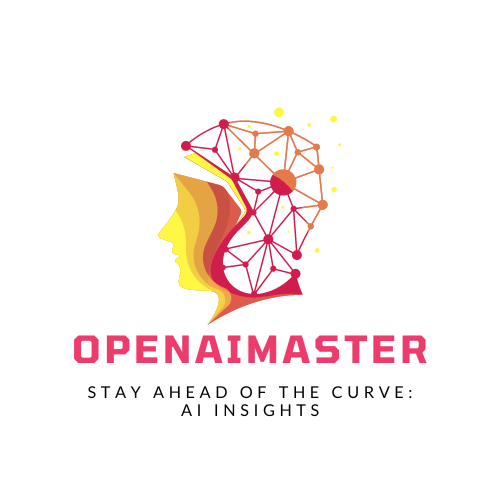Introduction
Generative AI is a subset of AI technologies that are capable of generating new, original content in various forms, including text, images, audio, and more. By harnessing the power of machine learning algorithms and deep neural networks, these AI systems can process and learn from vast amounts of data, recognizing patterns, features, and structures within that data. They can then use this knowledge to create novel outputs that are coherent, contextually relevant, and statistically similar to the training data they were exposed to.
What Is Generative AI?
At its core, Generative AI operates by starting with a prompt or input, which can be in the form of text, images, sounds, or any other data format. This prompt serves as the seed or starting point for the AI system. Once the prompt is provided, the AI model processes it using its trained algorithms and generates new content that is coherent and contextually relevant to the prompt.
For example, when given a text prompt, a Generative AI model can produce an essay, story, article, or even computer code. When presented with an image prompt, it can create a new image that shares characteristics with the input while introducing novel elements. This ability to generate new, original content from a simple prompt is what sets Generative AI apart from traditional AI systems that are designed primarily for tasks such as classification, prediction, or pattern recognition.
The Technology Behind Generative AI
The driving force behind Generative AI is a class of machine learning algorithms known as neural networks, particularly large language models (LLMs) like GPT (Generative Pretrained Transformer). These models are trained on vast amounts of data, allowing them to learn the intricate patterns and structures present in that data.
One of the key architectures used in Generative AI is the Generative Adversarial Network (GAN). GANs are composed of two neural networks: a generator and a discriminator. The generator network is responsible for creating new outputs, while the discriminator network evaluates these outputs and provides feedback to the generator, helping it improve over time.
Another important architecture is the Variational Autoencoder (VAE), which is used for generating new data samples by learning the underlying distribution of the training data.
Applications of Generative AI
The potential applications of Generative AI are vast and span various industries and domains:
- Content Creation: Generative AI can be used to assist in the creation of written content such as articles, stories, scripts, and even poetry. It can also generate images, videos, and audio, opening up new possibilities for creative expression and multimedia production.
- Design and Art: AI systems can generate novel designs for products, logos, and user interfaces, as well as create original artwork in various styles, from paintings to sculptures.
- Coding and Software Development: Generative AI can assist in generating code snippets, automating repetitive programming tasks, and even creating entire software applications or websites based on natural language prompts.
- Drug Discovery and Development: By analyzing vast amounts of data on molecular structures and biological processes, Generative AI can help identify and design new drug candidates, potentially accelerating the drug discovery process.
- Business Process Transformation: Generative AI can be used to automate and optimize various business processes, such as customer service, supply chain management, and financial forecasting, by generating tailored solutions and recommendations.
Ethical Considerations and Challenges
While the potential of Generative AI is undeniable, it also raises important ethical considerations and challenges that must be addressed:
- Accuracy and Trustworthiness: As Generative AI models generate new content based on their training data, there is a risk of propagating biases, inaccuracies, or misinformation present in that data. Ensuring the accuracy and trustworthiness of the generated content is crucial.
- Misuse and Deepfakes: The ability to generate realistic images, videos, and audio opens up the possibility of creating deepfakes – highly convincing media that can be used for malicious purposes, such as spreading disinformation or impersonating individuals.
- Intellectual Property and Plagiarism: Generative AI models can potentially reproduce copyrighted content or plagiarize existing works, raising concerns about intellectual property rights and fair use.
- Disruption of Traditional Business Models: As Generative AI becomes more capable, it may disrupt traditional business models and industries that rely on human creativity and content production, potentially leading to job displacement and economic disruption.
- Ethical Use and Governance: As with any powerful technology, there is a need for ethical guidelines, governance frameworks, and responsible development practices to ensure that Generative AI is used in a way that benefits society while mitigating potential risks and negative impacts.
Conclusion
Generative AI represents a significant leap forward in the field of artificial intelligence, offering unprecedented opportunities for creativity, innovation, and automation across various industries. From generating written content and designing products to discovering new drugs and optimizing business processes, the potential applications of this technology are vast and exciting.
However, as with any transformative technology, Generative AI also comes with its own set of challenges and ethical considerations. Addressing issues such as accuracy, trustworthiness, misuse, intellectual property rights, and responsible governance will be crucial to ensure that this technology is harnessed for the betterment of society.
As Generative AI continues to evolve and become more sophisticated, it is essential for researchers, developers, policymakers, and society as a whole to engage in open and constructive dialogue to navigate the ethical and practical implications of this powerful technology. By doing so, we can unlock the full potential of Generative AI while mitigating its risks and ensuring that it is developed and deployed in a responsible and beneficial manner.




